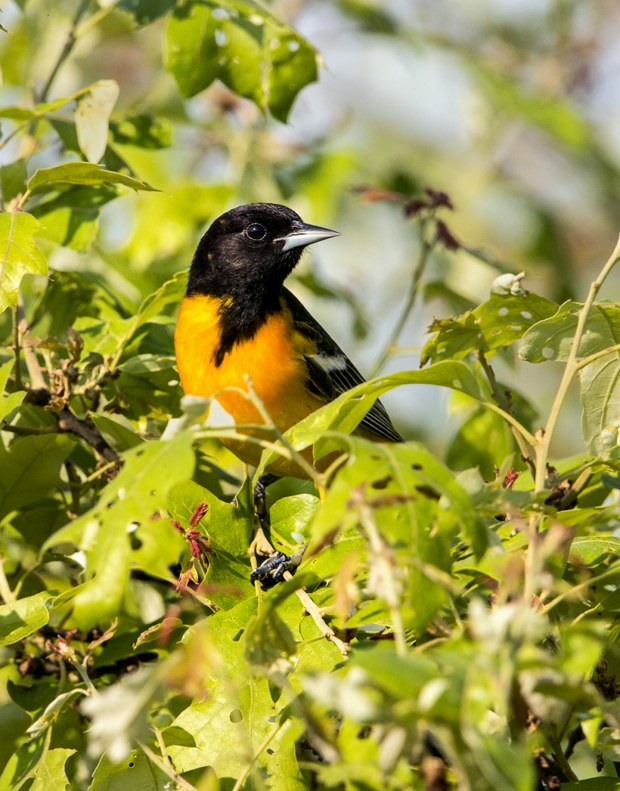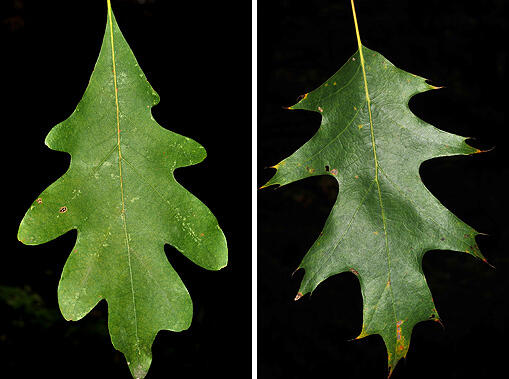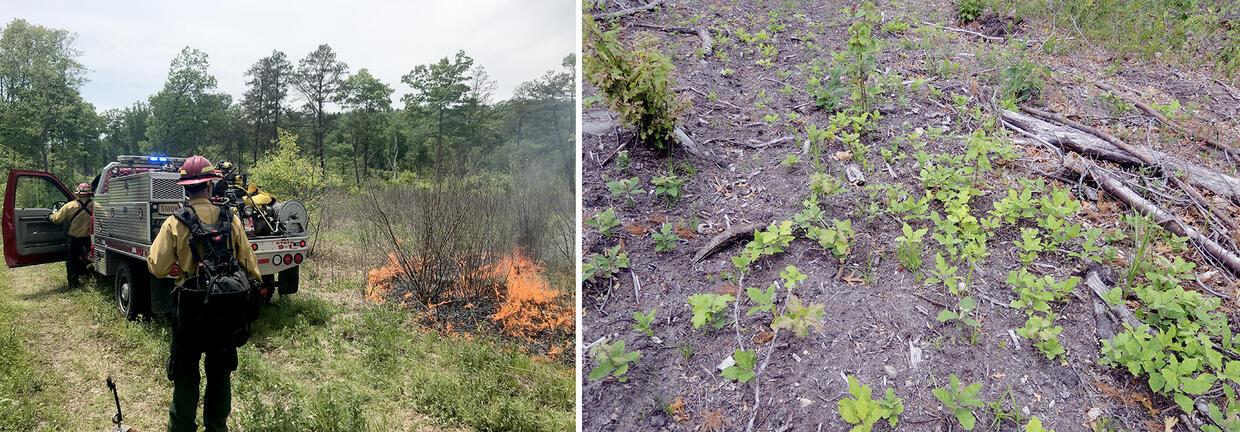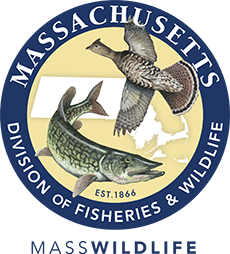- Division of Fisheries and Wildlife
- MassWildlife's Natural Heritage & Endangered Species Program
Media Contact
Media Contact, MassWildlife

Over 10 species of oak can be found in Massachusetts in a variety of upland and wetland habitats, from scrub oaks that grow in the dry sandplains of Cape Cod to chestnut oaks on ridges of the Connecticut River Valley. When you think of an oak tree, you may recall a favorite tire swing from childhood or a particularly comfortable shade tree in the park. What you may not realize is that oaks are pillars of biodiversity in the forests of New England.
Oaks provide high-quality food for a wide variety of creatures. Acorns, once ground into flour by Native Americans, are packed with fats and proteins and eaten by all kinds of wildlife including white-tailed deer, wild turkeys, black bears, wood ducks, ruffed grouse, blue jays, gray and flying squirrels, mice, and voles. But even more impressive are the leaves which are eaten by over 500 species of moth and butterfly caterpillars—significantly more than any other hardwood tree species. The caterpillars in turn become food for families of breeding birds. The birds keep the caterpillars in check and save the oak from losing all its leaves. In addition, oaks support hundreds of species of oak gall forming wasps (Cynipidae) which become yet another food resource for native wildlife. Oaks are vital to a vigorous forest food web and that’s why oak conservation is a priority for MassWildlife.
In order for oaks to establish and grow, they need a disturbance to create an ideal seedbed with plenty of sunlight, and there is no better tool than fire. In fact, fire and oaks go hand in hand. Oaks provide fuel in the form of leaves which dry to a crisp better than other hardwoods and their curled edges allow the fire to spread. Fire creates the bare mineral soil seedbed which is perfect for acorn germination and eliminates other hardwood competition that could shade the oak seedling. Young oaks devote much of their energy to creating strong root systems, so if a fire occurs the top of the sapling may be killed but the sapling can quickly resprout using reserves from its roots. This ability to regenerate quickly after a fire allows oaks to outcompete other tree species.
Fire suppression, which began in the early 1900s, is one factor that has resulted in a significant decrease in oak regeneration across the eastern U.S. Forests have become increasingly dominated by maple, birch, and hemlock. Because of the critical importance of oaks and oak forests to wildlife, MassWildlife and its partners conduct prescribed fires at strategic locations to aid in their regeneration. Returning fire to the landscape benefits oaks and other plants that require fire to thrive. The restored habitats that result from carefully planned prescribed fires support many native mammals and birds along with bees, moths, and butterflies.
Learn more about how MassWildlife is restoring habitat across Massachusetts.
There are two main groups of oaks, the whites and the reds which can be easily distinguished by their leaves. White oaks (left) have rounded leaf lobes, red oaks (right) have pointed leaf lobes.
MassWildlife uses fire as a tool to promote the growth of oaks which are on the decline due in part to decades of fire suppression. The photo on the right shows oaks sprouting soon after a fire has exposed the bare mineral soil.




